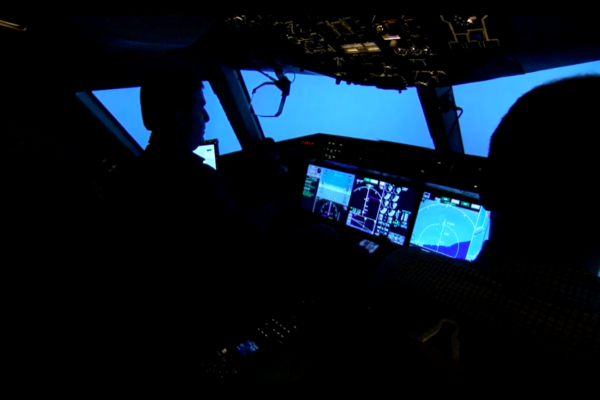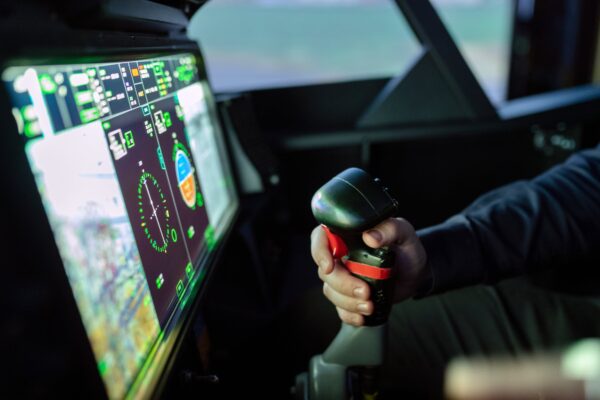Problem #1 – Performance limitations with compact simulators
Compact simulators are excellent solutions for providing portable and mobile training systems.
Space is often limited on sites and not all training sites can have a permanent simulator, therefore mobile simulators provide the ability to take the training to everywhere it is needed.
However, being portable often forces decisions and compromise on the amount of equipment and also the performance of equipment to be deployed.
To move beyond the performance limitations we need to consolidate functions from multiple computers to a single host and also provide the rendering in a high density, high-performance package.
Problem #2 – Various different hardware components required
Hardware synchronisation costs quickly stack up, the synchronisation cards are specialised and represent a significant part of the investment when considering complex high-fidelity simulation.
Additional cabling may be required for the equipment cabinets and typically each image generating computer requires a dedicated Sync card.
By combining multiple IG systems into a single sub-enclosure we are able to share a single sync card across 4 IG compute subsystems, thus reducing the cost of hardware synchronisation by 75%
Problem #3 – Increased simulator cabinet noise levels
Hi-performance simulators operate at the cutting edge of technology, using the most powerful graphics and processing engines in the market today.
However, all this comes at a cost. Cooling cutting edge power requires huge volumes of air and moving large volumes of air through complex air paths creates significant turbulence and noise. The smaller the area we need to move the air through the greater the noise level created.
In order to provide performance at the cutting edge without the noise levels typically associated with it and without adding huge complexity, cost or scaling up the size of equipment used, we need to redesign out the concept of a computer and design IG and high-end processing platforms with cooling and noise out considered as a major consideration of their design.
Problem #4 – Complex hardware architecture
Reduction in overall architecture complexity become possible and even simple once multiple IG computing systems are consolidated into fewer independent systems. This can either be through virtualisation or for the ultimate in performance through condensing hardware and sharing common hardware components such as chassis, slide rails, hardware synchronisation, cooling systems and power supplies.
Problem #5 – Increased size and weight of simulator racks
By reducing the overall component count within a simulation system you reduce, cost, weight, failure risk, cabling, infrastructure, required cabinet count and overall system volume. This has many benefits, not only in the purchase cost but also in the total cost of ownership.






